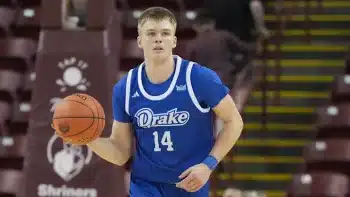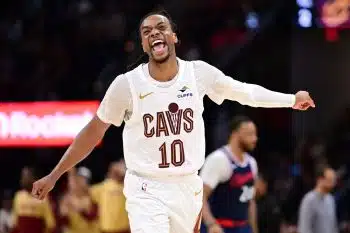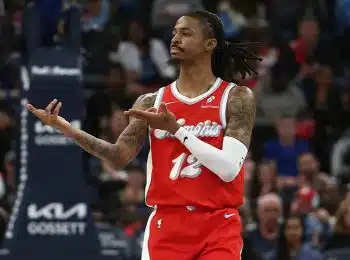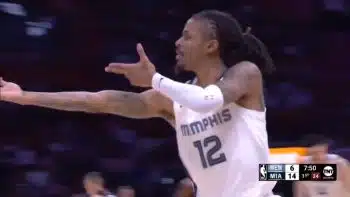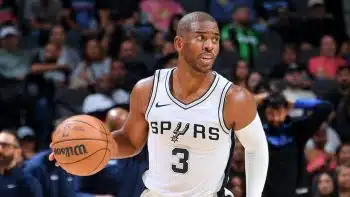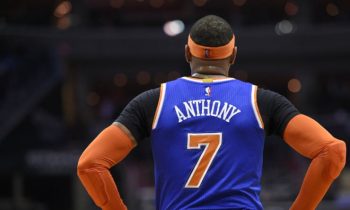NBA
Now What? – Charlotte Hornets
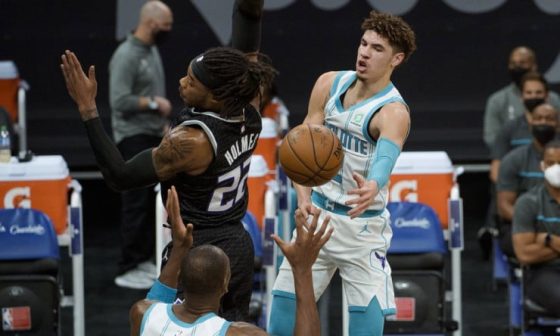
Welcome back to Basketball Insiders’ “What’s Next” series. We previously covered the teams that missed both the playoffs and the Play-In Tournament. Now, we’re focusing on teams that are either on the cusp of making the playoffs or are trying to build contenders. The Charlotte Hornets, despite the outcome, had quite a fantastic season. There’s a feeling around the organization that if Gordon Hayward and LaMelo Ball hadn’t suffered significant injuries, the Hornets could’ve pushed for homecourt advantage in the playoffs.
That’s not far from the truth. For much of the season, Charlotte looked like a shoo-in for at least a top-six seed. However, several injuries plagued the team and sent the Hornets spiraling down the Eastern Conference standings. Even though injuries played a big part in Charlotte’s downfall, it wasn’t the only issue. So, what’s next for the Charlotte Hornets?
Strengths
At one point in the season, the Charlotte Hornets looked primed to win the Southeast Division and claim their first playoff spot since 2016. While that didn’t come to fruition, there’s no doubt that a solid framework is already laid out for the team. For the first time in ages for Charlotte, the team is loaded with young talent, which makes for difficult rotational decisions.
The elephant in the room is, of course, LaMelo Ball. Under the recently implemented lottery odds, the Hornets were able to jump up to the No. 3 selection in 2020 to acquire the young guard. Not only did Ball deliver on the hype, he flat-out dominated in his rookie season. He hasn’t even turned 20 and yet, Ball put up 15.7 points and 6.1 assists per game this year. Furthermore, the guard shot the lights out before going down with an injury, which was one of his only pre-draft weaknesses.
Charlotte also boasts P.J. Washington, who has the makings of an All-Star. Washington finished his season averaging 12.9 points and 6.5 rebounds while serving as a perfect small-ball stretch five for Ball and company. Though he was relatively stagnant between his rookie and sophomore seasons, Washington has a full offseason ahead to develop. Further, Washington may already be Charlotte’s best defensive player. Washington posted the second-best defensive rating on the team while leading the team in total blocks and ranking third in steals.
Outside of Washington and Ball, there are plenty of other dominant young players. Miles Bridges does more than put up highlight-reel dunks, he’s the perfect pick-and-roll complement to Ball. Bridges even took a major leap offensively, coming ridiculously close to the elusive 50/40/90 club.
One thing has become *very* clear this season: @MilesBridges can DO. IT. ALL. 😤 #AllFly
— Charlotte Hornets (@hornets) June 5, 2021
Both Malik Monk and Devonte’ Graham had their fair share of highlights and Jalen McDaniels excelled in an expanded role. The Martin twins, Cody and Caleb, faltered slightly in their play from last year, but both gave the Hornets good minutes. Vernon Carey Jr. showed glimpses of offensive greatness while Nick Richards looked great on the other end of the floor. Even two-way contract players Grant Riller and Nate Darling were two undrafted rookie steals.
In fact, there are positive things to say about every player on this roster. Team building has been an absolute strength for general manager Mitch Kupchak and the rest of the front office. The way this roster has been built leaves the door wide open for internal growth because every young player on the team has shown potential for rotational greatness.
That’s where Charlotte’s other big strength comes in: coaching. James Borrego is from the Gregg Popovich coaching tree, which has paid obvious dividends for the Hornets. Borrego’s philosophy of playing players that earn playing time was massive for the team last season. Former head coach Steve Clifford seemed to rely heavily on former Hornets veterans like Nicolas Batum, Michael Kidd-Gilchrist and Marvin Williams, which didn’t give many opportunities for younger players to step in.
Borrego adjusts his rotations based on how players fare in practice, not their tenure. That allowed Charlotte to get a jumpstart on its rebuild and for its younger players to see the limelight much earlier.
Last but not least, the Hornets have Hayward and Terry Rozier. Both players played at All-Star levels last season and have far exceeded expectations. Many thought Hayward, earning $28.5 million in 2020-21, and Rozier, earning $18.9 million, were vast overpays. However, both gave the Hornets cornerstone options and the perfect complementary players for their young core.
Weaknesses
While there are many strengths of the Hornets, it isn’t all sunny in the Queen City. Firstly, size and the center rotation were glaring issues for the team. Part of the reason the Hornets lost so badly in the Play-In Tournament was because they had nobody that could stop Domantas Sabonis or Goga Bitadze from snagging boards.
Charlotte’s center rotation was spread between three players for the majority of the season: Cody Zeller, Bismack Biyombo and Carey. Starting with Zeller, it’s clear to see the Hornets were phasing him out of their rotation. A longtime starting lineup staple, Zeller appeared in just 48 games with 21 starts on the year. The Hornets actually played well in his minutes, but a change in scenery is possibly on the horizon.
For starters, Zeller isn’t able to do much defending if he’s spread out beyond the rim. Zeller is the second-tallest player on the roster and is quite slow. So if Zeller gets taken out of his comfort zone by a guard or wing, it’s an immediate issue for Charlotte.
Beyond Zeller, the Hornets did some experimentation. Biyombo actually got 36 starts on the year but ranked seventh in minutes played. Like Zeller, Biyombo is only effective at the rim on defense. But unlike Zeller, Biyombo is not able to generate any offense for himself and often finds himself at the mercy of a defender if he tries to post up with his 6-foot-8 frame.
Carey got looks at the starting center position, and put up some offensive highlights, but is ineffective on defense. Carey is slow to react to attackers with the ball and it is costly. Furthermore, Carey is just 6-foot-9 with a 7-foot-1 wingspan, so he often finds himself on the wrong end of a mismatch. While Biyombo is similarly small, his 7-foot-6 wingspan allows him to mask his size at the rim, whereas Carey is not.
The Hornets should’ve been letting Vernon Carey rock his game is looking solid 🔥
— •X• (@XHoopReport) April 17, 2021
Washington was the other player to see minutes at the five, and those were some of the most successful of the season. Charlotte’s fourth and sixth-most used lineups on the year both feature Washington at center and post a plus-21.4 and plus-30.4 rating, respectively. Out of Charlotte’s five-man lineups to see more than 50 minutes, only five of 11 boasted positive ratings. Three of those five featured Washington at center.
So while Washington played well in those minutes, the team suffered miserably in minutes without him at that position. For reference, Biyombo helmed the five for the first, third and fifth-most used five-man groupings and those lineups were a -10, -19.3 and -47.5, respectively. The Hornets need center help in the worst way.
Opportunities
Luckily for Charlotte, the free-agent market and draft present excellent opportunities for improvement at the five. For starters, free agent Richaun Holmes of the Sacramento Kings is expected to see significant interest from the Hornets. Holmes would present an immediate upgrade with size, and he’s a quicker defender than the Hornets’ current selection. Furthermore, Holmes is just 27 and posted 14.2 points and 8.3 rebounds per game.
Richaun Holmes was an ABSOLUTE BEAST this season for the Kings‼️👑 The 6’10 big man averaged a career-high 14.2 points, 8.3 rebounds, and 1.6 blocks while shooting 63.7% FG and 79.4% FT.
He had thirteen 20+ point games and twenty-two games of 10+ rebounds. @Rich_Holmes22 pic.twitter.com/eg2BhNV6ga
— GTV HOOPS (@gtvhoops) June 1, 2021
Outside of Holmes, the draft is rife with stellar young centers. Evan Mobley would be a pipe dream for the Hornets, as he’s one of the best defenders in the draft and has major star potential. It’s not impossible that the Hornets jump up, they moved from the eighth-best odds last year to the third pick when they landed Ball. This year, the Hornets have an 8.5 percent chance of moving into the top four.
Even if the Hornets can’t get a top pick, there will be several premium options available at No. 11, where they are currently slotted. One particular standout is Alperen Sengun, who is quickly rising up the big boards of NBA teams. Sengun stands out as a potential Hornets acquisition because he’s just 18, is 6-foot-10 and plays like a point guard at times. Sengun averaged 19.2 points, 9.4 boards, 2.5 assists, 1.3 steals and 1.7 blocks per game in Turkey. According to Sam Vecenie of The Athletic, Sengun averaged around four assists per game in his last 14 games. Sengun currently ranks eighth on Vecenie’s board.
Other opportunities will come with how cohesive this group becomes. If Ball develops into an All-Star level player in a similar way to guards like Ja Morant or Trae Young, the Hornets could quickly become an Eastern Conference contender.
Threats
Outside of the draft, Charlotte’s offseason begins and ends with how the franchise handles the pending free agency of Monk and Graham. Both players showed the potential for greatness across their Charlotte tenures but neither has lived up to the hype.
Graham exploded onto the scene last year as a Most Improved Player candidate. Graham averaged 18.2 points and shooting 37.3 percent from range on 9.3 attempts per game last year. Graham’s performance also earned him a spot in the three-point contest last season. While Graham is a fantastic sniper, he doesn’t offer much else for Charlotte. He was one of the team’s best players last season but took a step back and saw his numbers, outside of three-point clip, dip from what they were before.
Alternatively, Monk had a lot of hype surrounding him following his selection in the 2017 NBA Draft. Monk was college teammates of Bam Adebayo and De’Aaron Fox and became notorious for his dynamic college season at Kentucky. However, it hasn’t all clicked for Monk. He had a tremendous 2020-21 season but he also missed time the year prior due to a PED-related suspension.
Both Monk and Graham will likely earn eight figures per year when they hit free agency. Charlotte’s decision revolving around both will likely determine the trajectory of Borrego’s guard rotation and how Ball’s role develops over time. If the Hornets overpay for one or both of Monk/Graham, then it could spell trouble for the team. However, Kupchak has a history of proving doubters wrong when it comes to free-agent signings, as seen with Hayward and Rozier.
Regardless of what happens in the offseason, the Hornets clearly have the pieces necessary to compete. It’s all just a matter of figuring out which players are here for the long run and building around those. One thing is for certain: it’s a new era in Charlotte.
